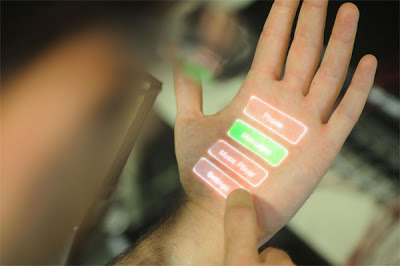No Keyboard
Dec 3, 2014
 The keyboard to a computer is like the steering wheel to a car or like money to a wallet. What they have in common is that they all quickly disappear. And it’s for the better too, as less or no friction between intent and interaction will create new, yet unheard business opportunities in many different areas. The interface to computing and the network will be visual, audible, sensitive and ‘sensorized’. Enterprises that know how to take advantage of new ways of making contact to their customers, could equally reposition their existing business and create disruptive new business models. ‘Contact’ thus becomes the new ‘content’.
The keyboard to a computer is like the steering wheel to a car or like money to a wallet. What they have in common is that they all quickly disappear. And it’s for the better too, as less or no friction between intent and interaction will create new, yet unheard business opportunities in many different areas. The interface to computing and the network will be visual, audible, sensitive and ‘sensorized’. Enterprises that know how to take advantage of new ways of making contact to their customers, could equally reposition their existing business and create disruptive new business models. ‘Contact’ thus becomes the new ‘content’.
Close your eyes and imagine a scenario of the future. Does your self-driving car still have a steering wheel and does your computer still have a keyboard? The answer probably is no. The impact can hardly be overestimated, since all these interfaces involve important processes – like paying, transportation and the production and consumption of information. When all these processes change, man changes. From a business perspective the essential notion is that technology reduces interfaces, leading to easier contact and a radically different view on interaction and value.
By electrifying the keyboard with the invention of the modern telegraph around 1870, we were for the first time able to teleprint messages over long distances without the interface of a morse code key. Digitizing the keyboard created the computer terminal by which man could exercise computing power. ‘Glassing’ the keyboard made the computer mobile and ubiquitous. The next step will be ‘gluing’ the keyboard to any surface creating many new means for interaction based on touch and sense, actually rendering the keyboard useless. The disappearance of the keyboard is part of the ongoing digitization of interfaces that can be seen in many areas.
If the old paradigm was text and keyboards, the new one is visual, audible, sensitive and sensorized. An appetite for connecting things and sensors expands the boundaries of an enterprise: the direct linkage of conventional information systems with new data sources will create all kinds of interface-less, friction-less business processes. Sure, we all get the potential by now – or ramifications if you like – of Google Glass and Apple’s Watch (the only tapping involved is gently on your wrist). But specifically leveraging the variety of data, existing enterprise data combined with sensor or location data, will become valuable and potentially disruptive. Real-time information from wearable devices – such as Microsoft’s Band – combined with electronic patient records for instance, enables a new style of healthcare. Predictive and prescriptive analytics in many other sectors will become the dominant way to organize maintenance, spectacularly improving the leverage and availability of assets.
The business focus will be on serving customers and employees in their mobile moments of need, removing any friction that would stop them from getting the products and services they need. Just taking a product in your hands becomes a new customer touch point, creating valuable information through contact. Actually, contact becomes the new content.
And contact can be anywhere – it’s all about sweating the assets. It may simply involve a smartphone searching for a wifi connection (translating to knowledge about how many individual people passed a store), but also somebody lifting a product from the shelf in a supermarket. Technology that sends information through a human body to a smartphone after touching an object is already available (using BodyCom technology). The touch of a postal packet for instance, is enough to transfer information about delivery completion. Advanced body- and sense-enabled technologies are making QR-codes old fashioned and obsolete. Printed electronics (smart paper) are paving the path for new direct interaction possibilities where the only interface that remains is the touch of a finger to the object of interest.
In a world with less keyboards, a computing device no longer takes the center stage. It redefines the way we interact, with technology silently morphing itself to whatever need we have. Enterprises that get this will be superior in earning the attention of their customers, employees and partners. No keyboard, no friction. Do we have contact now?
This article is part of a series called TechnoVision 2015. Check out the Capgemini CTO blog for all topics.

 English | EN
English | EN 
